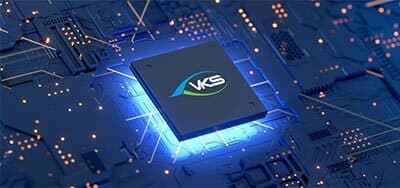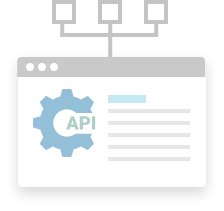Why Is It Crucial to Use Connected Factory Technology?
With the advent of Industry 4.0, a number of sophisticated systems were created to aid workers and operations within the manufacturing environment. These systems were able to achieve higher levels of productivity but there was one problem.
These systems couldn't consistently interact with one another, meaning that communication between processes and departments was still largely dependent on manual processes. When quality information needed to be shared with R&D, someone would have to retrieve the information and then manually send/deliver the information.
Now, connected factory technologies allow manufacturing systems and tools to automate and regulate themselves for an optimal workflow that is both efficient and self-sustaining.

The 3 Manufacturing Goals of Connected Factory Technology
With the help of APIs and IoT devices, companies are steadily integrating connected factory technology into their operations. While this may sound well and good, most companies will be curious about the specific goals of connected worker technology.
Here at VKS, we see connected factory technology as an opportunity to fulfill the 3 following manufacturing goals.
1. Centralized Data Sharing
As we said before, “Knowledge is power”. The more knowledge we have, the better decisions we can make.
What if we have the knowledge but don't have access to it? Then the decision-making process becomes much more difficult.
Connected factory technology, which connects systems, machines, and people, makes knowledge and information more accessible at every point of the manufacturing process. As soon as users perform an action in one section of the process, the other manufacturing elements have access to the data.
2. Automated and Self-Sustained Processes
With a free flow of information, connected factories sustain and correct themselves with little human intervention, making an automated multi-system framework. Every stage of assembly is monitored and subject to quality control. If something does not meet the established production parameters, the product line quickly warns employees and, if required, stops production.
For example, imagine you run an assembly line where workers and automated machines assemble magnetic components used within medical devices. Workers receive the necessary parts for assembly and follow their VKS Work Instructions to fulfill their tasks. At the end of the line, a robot arm and several cameras inspect the assembled components for quality control and assurance.
When a product passes the test, it records the serial number and places the component in a bin for shipping. At this point, the whole automated operation is aware of the successful part. Likewise, when there is a defective part, the robot arm places the piece in a labeled bin, records the product’s serial number, and automatically creates a new work order for rework within the work instructions.
Similarly, connected factory technology enables machines and equipment to regulate themselves and avoid bottlenecks or stalls within the production line. When there is a machine malfunction, the machine communicates with the MES to issue a maintenance work order and adjust the production flow to account for the problem.
3. Enhance Worker Value
The purpose of connected factory technology is to empower the workers in the business and process. And with incredibly fast communication between systems and machines, this is more possible than ever before.
Every person within the manufacturing environment is empowered to make better decisions and create more value for the customer and the company.
For supervisors and managers, connected factory technology enables them to gain a complete perspective of their business processes, machines, systems, tools, and people. As this knowledge is quickly available and highly accurate, the connected factory opens the doorway to smarter and more effective decision-making.
For workers on the shop floor, enhanced communication and automated processes enable the connected factory to take over the simple yet time-consuming tasks of the manufacturing floor. Now, workers can offer distinctively human insight and focus on tasks that computers are unable to execute.
Engineers benefit from the technology through a complete 360-degree view of every process. This access to information empowers engineers to quickly address issues, perform root cause analysis, and find the right solutions for their production lines.
Connected Factory Technology: Work Instruction Software
One of the key contributors to connected factory technology is VKS Work Instruction Software. With its innate ability to connect and integrate with other systems like ERPs, MES, and BI Software through its advanced API, VKS engages and empowers people to do more and create the utmost value with every action.

For example, automated processes involving machines are often far removed from processes involving people. But VKS, a tool that strives to provide the best of Industry 5.0, connects the two seemingly disparate operations, enabling manufacturers to gain incredible human insight while maintaining high levels of precision with every procedure and task.
Assembly operators use a visual guidebook that provides step-by-step instructions on the specifics of every procedure, enabling human actions to be highly standardized, accurate, and productive. As workers perform their duties, VKS gathers data that is then shared with other systems to optimize quality, track inventory, augment production, and more.
The connected factory depends on technology that can easily integrate with other high-value manufacturing systems. VKS makes this happen while enhancing the actions of the people that matter most.











